What's New
Displaying results 2821 - 2830 of 4052
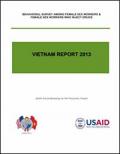
Resource | Publications,
In 2012, PSI/Vietnam conducted the third and final round of the Sex Workers (SW) and Sex Workers Who Inject Drugs (SW-IDU) Behavioral Survey, following previous rounds conducted in 2009 and 2011. The purpose of the survey was to inform and evaluate SW and SW-IDU programming.
This is a cross-sectional study among female SWs and SW-IDUs in 7 priority President’s Emergency Plan for HIV/AIDS Relief (PEPFAR) provinces: Hanoi, Hai Phong, Quang Ninh, Nghe An, Ho Chi Minh City, Can Tho, and An Giang. The study additionally focuses on a sample of SW-IDUs recruited in four provinces where Song Dep outreach has been launched: Hai Phong, Quang Ninh, HCMC, and Nghe An, along with Hanoi, where low dead space syringe (LDSS) piloting is being implemented.
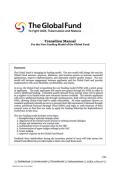
Resource | Guidelines,
The Global Fund is changing its funding model. The new model will change the way the Global Fund assesses, approves, disburses, and monitors grants to increase successful applications, improve implementation, and ultimately achieve greater impact. The new model will increase engagement between applicants and the Global Fund and provide implementers with more flexibility, predictability, and clarity.
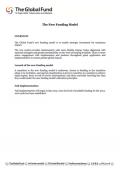
Resource | Guidelines,
The new model provides implementers with more flexible timing, better alignment with national strategies and greater predictability on the level of funding available. There is more active engagement with implementers and partners throughout grant application and implementation to ensure greater global impact.
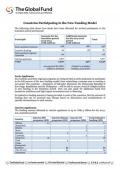
Resource | Guidelines,
Six countries and three regional programs are being invited as early applicants to participate in the full process of the new funding model, from submitting a concept note to creating a new grant. The countries – Zimbabwe, El Salvador, Myanmar, the Democratic Republic of the Congo, Kazakhstan and the Philippines – will be able to access a total of US$364 million in new funding in the transition period. They can also apply for additional funds that incentivize ambitious and high impact investments and co-financing.
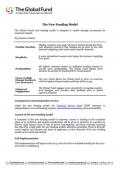
Resource | Guidelines,
A transition to the new funding model is underway. Access to funding in the transition phase is by invitation, and special consideration will be given to countries in a position to achieve rapid impact, those at risk of service interruptions, and those currently receiving less than they would under the new funding model’s allocation principles. There is diversity across regions and diseases and types of applicants, so that elements of the new funding model can be tested and refined.
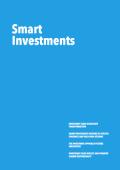
Resource | Publications,
HIV investment cases provide an important vehicle for countries to deliver strategic, rights-based, sustainable responses to HIV. The process of developing investment cases provides countries with new opportunities to explore options for innovative funding and service delivery, to identify specific steps to enhance equity and inclusiveness for key populations, to use available evidence to understand better the health and economic benefits of timely, rights-based, smart HIV investments and to eliminate inefficiency in HIV programmes.
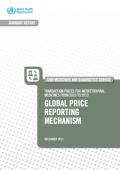
Resource | Publications,
This summary report is intended to provide the pricing data of key ARVs to governments, nongovernmental organizations, donors, international organizations, academia and individuals or institutions directly involved or interested in the procurement of ARVs in resource-poor settings.
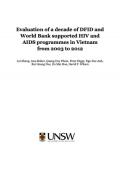
Resource | Publications,
This report provides the findings of a comprehensive evaluation on the implementation, management, estimated population impacts, and cost-effectiveness of the DFID and the World Bank funded harm reduction programmes in Vietnam. It mainly included three major components: (1) an extensive literature review of legal and policy documents to understand key changes in the legal and policy environment in Vietnam; (2) a qualitative study utilising focus groups with key stakeholders and programme participants to provide background and context for understanding the implementation, management and effectiveness of the DFID/WB programmes; (3) a quantitative assessment of population impacts and cost-effectiveness of DFID/WB programmes based on a mathematical model.
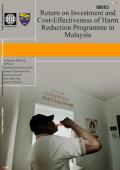
Resource | Publications,
This project aimed to assess whether the harm reduction programmes in Malaysia, which consists of NSP and MMT programmes amongst PWID, have been cost-effective from the perspective of the government by estimating savings in direct health care cost to the government resulting from infections that were averted as a result of the NSP and MMT programmes. The following estimates were included in the estimate of savings in direct health care costs; estimate the cost-effectiveness of the NSP and MMT programmes in terms of costs for the provision of programmes net of health care cost savings for each quality-adjusted-life years (QALYs) gained; estimate the return on investment (ROI) from NSP and MMT programmes where ROI refers to total health care costs saved from averted infections in comparison to total programme costs.

Resource | Publications,
Violence against women and girls is a global pandemic of alarming proportions. No country is free of the scourge, no socio-economic class is exempt from its destructive effects. It takes place within homes, on the streets, in schools, workplaces and refugee camps, and is prevalent whether in times of peace or during crises and conflicts. Its many forms include domestic violence, rape and sexual abuse, trafficking and sexual exploitation, femicide, and harmful practices such as child marriage and female genital mutilation/cutting. Genderbased violence impoverishes and harms not only women and girls, but also communities and societies as a whole.
The United Nations Development Fund for Women (UNIFEM) has developed its Strategy 2008-2013 to end violence against women and girls, an overview of which is presented here.





